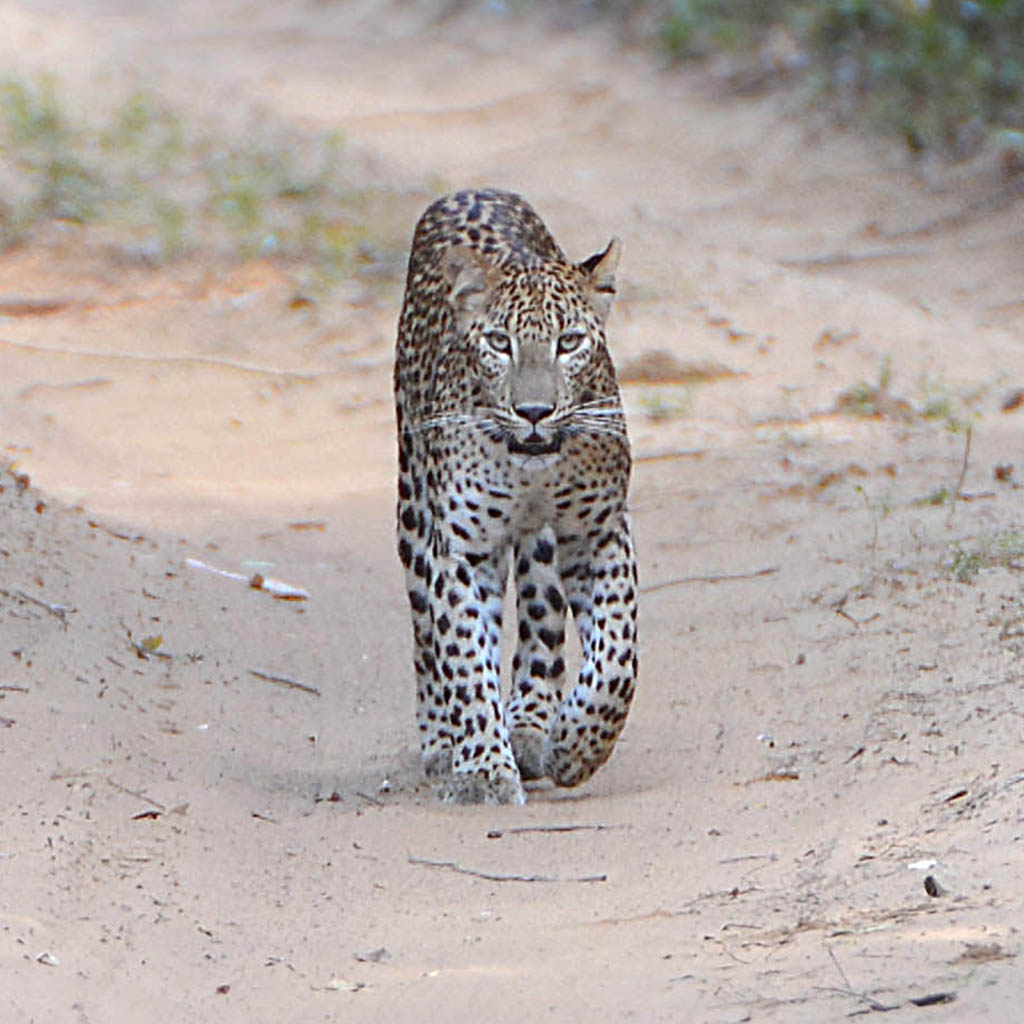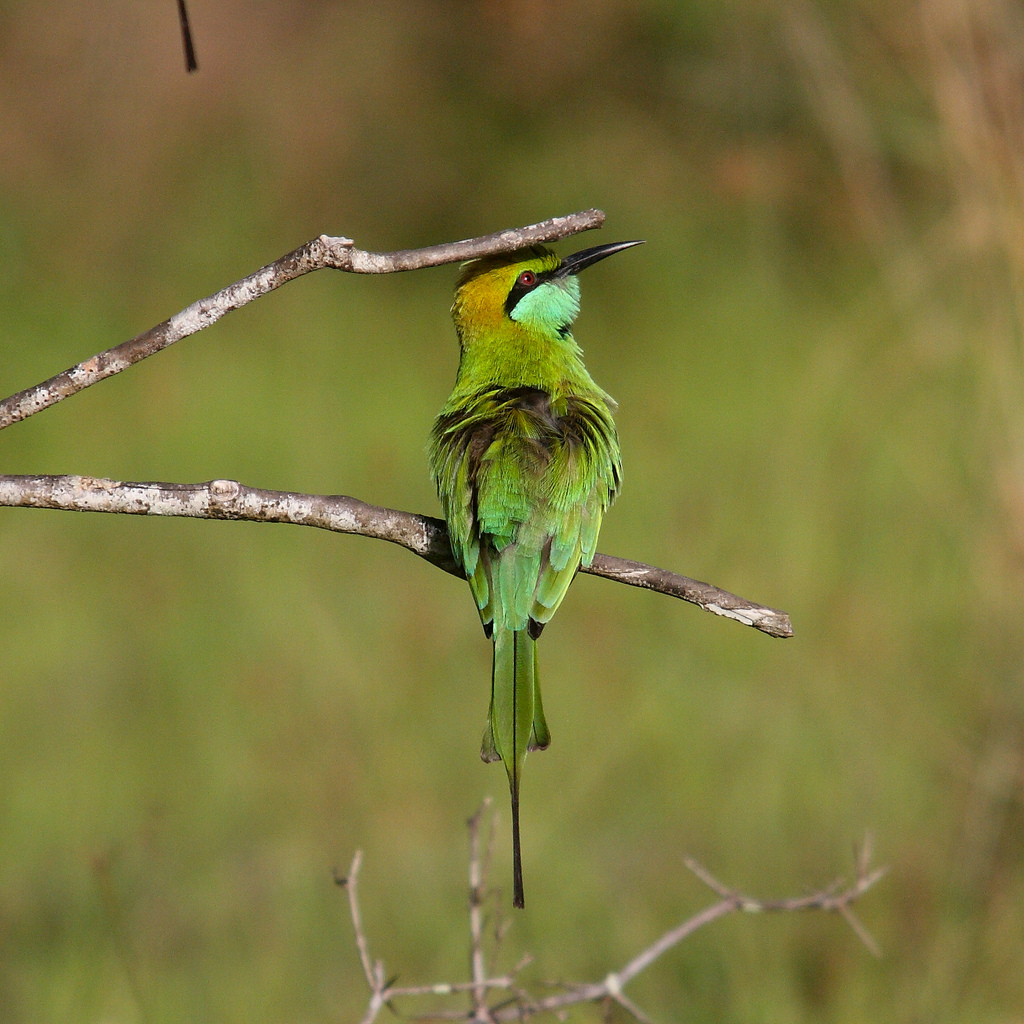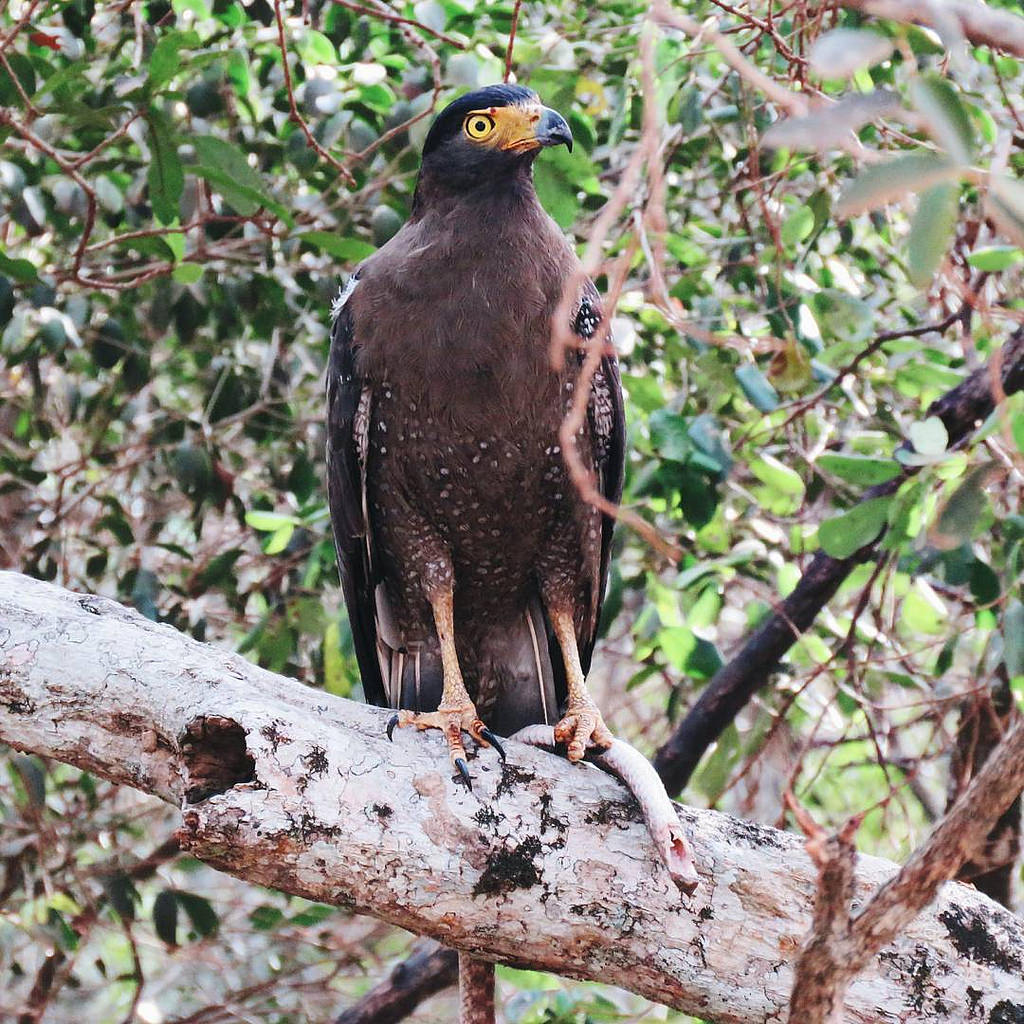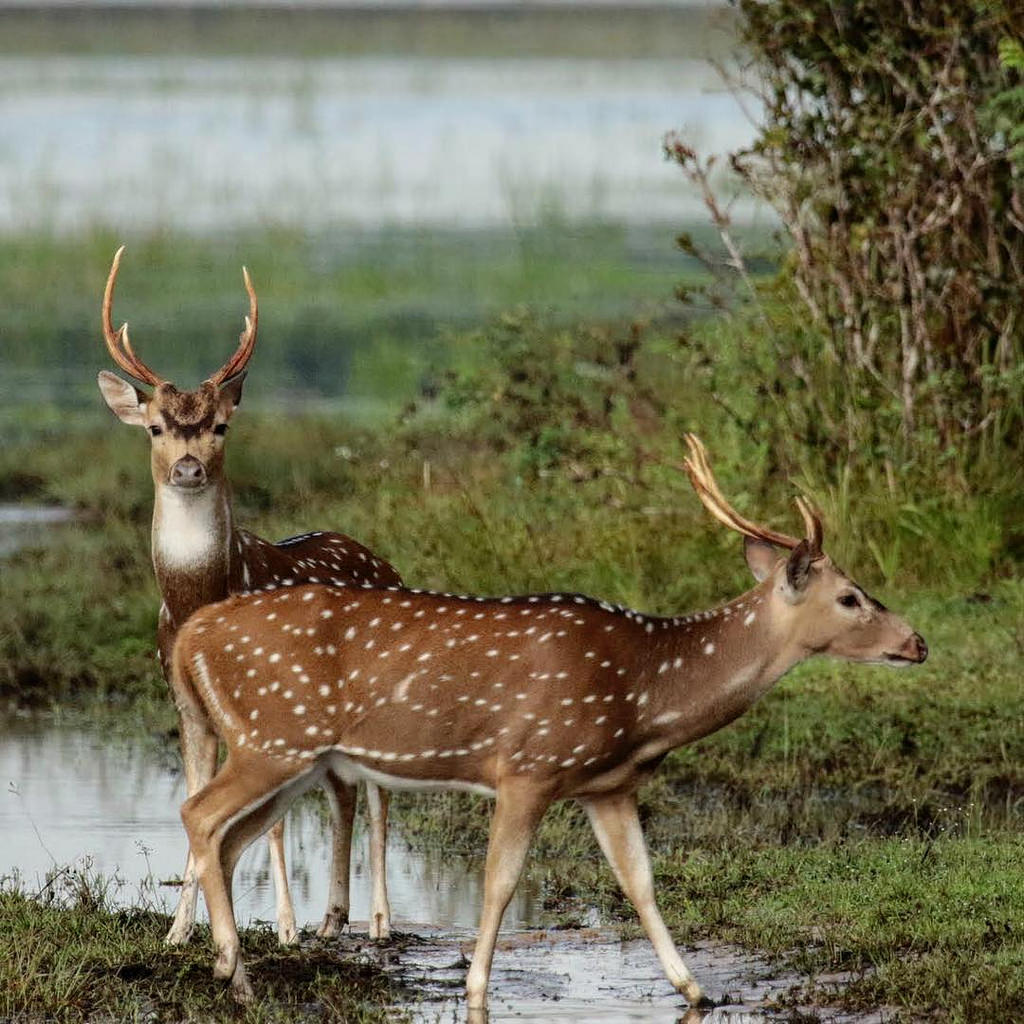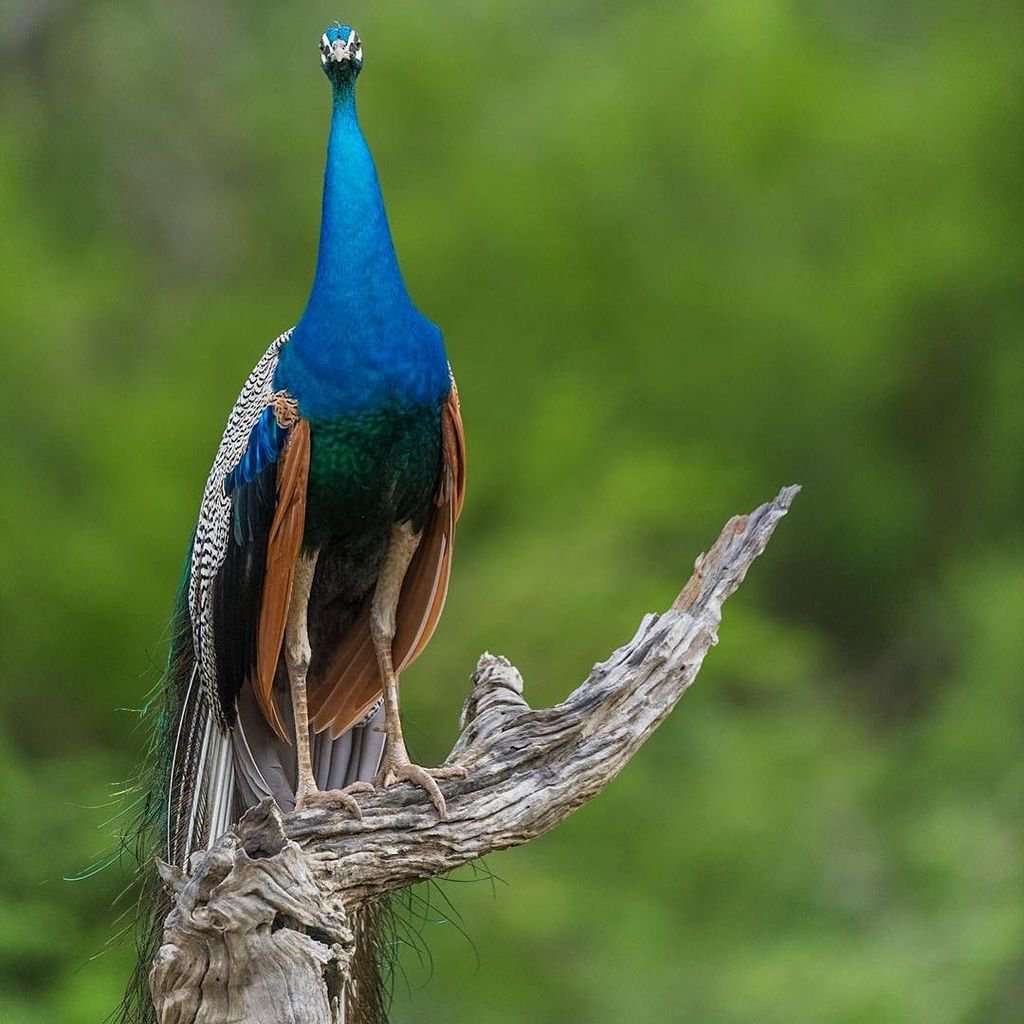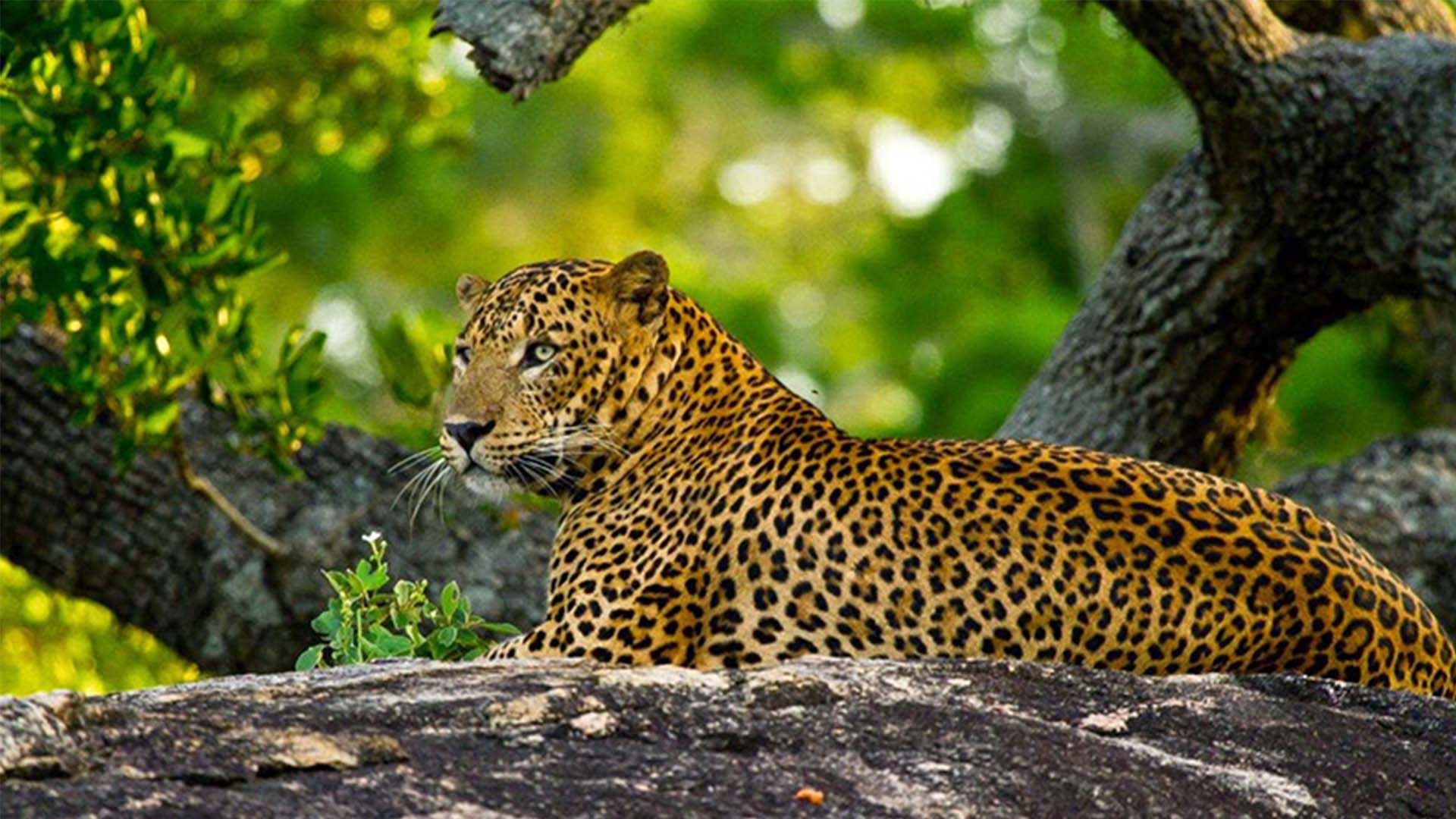Natural Sanctuaries
There are many National Sanctuaries you can visit in Sri Lanka. Yala is the largest national park. The National Parks of Sri Lanka are managed by the department of Wildlife and Conservation. The animals to be seen in Sri Lanka’s national parks include elephant, leopard, sloth bear, sambhur. The specialty here is the large numbers of elephants.
Sri Lanka’s heritage of wildlife protection runs as far back as 2200 years. The first (fauna & flora) wildlife sanctuary in world at Mihintale, 12 km east of UNESCO World heritage Site of Anuradhapura was created by the King Devanampiya Tissa (Sinhala: dear to the gods) (307-266 BC), following the arrival of Buddhism to the island from northern India. With the establishment of Buddhism in ancient Sri Lanka in 250 BC, it became a Royal prerogative to carry out everything humanly possible to spread the doctrine throughout the island.
Minneriya National Park is a national park in North Central Province of Sri Lanka. The area was designated as a national park on 12 August 1997, having been originally declared as a wildlife sanctuary in 1938. The reason for declaring the area as protected is to protect the catchment of Minneriya tank and the wildlife of the surrounding area. The tank is of historical importance, having been built by King Mahasen in third century AD. The park is a dry season feeding ground for the elephant population dwelling in forests of Matale, Polonnaruwa, and Trincomalee districts. Along with Kaudulla and Girithale, Minneriya forms one of the 70 Important Bird Areas (IBAs) of Sri Lanka. The park is situated 182 kilometres (113 mi) from Colombo.
Wasgomuwa spanning over 36,900 hectares is bordered by River Mahaweli Ganga and River Amban Ganga in east and west. The altitude varies from over 500m at the Sudu kanda hill to just 76m along the Mahaweli Ganga. The combination of a number of small reservoirs and Sudu kanda mountain range affords fine trekking opportunities for keen hikers.Tropical dry mixed evergreen forest predominates, characterized by tall trees: Weera (Drypetes sepiaria), Palu (Manikkara hexandra), Wa ( Cassia roxburghii) Ehala (C. Fistula), Buruta (Satin), Chloroxylon Swietenia, Velang (Pterospermum canescens), the endemic Galsiyambala (Dialium ovoideum), Milla (Vitaex Pinanata) and Kaluwara (ebony) (Diospyros Ebenum).
The center of the attraction is herds of elephants up to 150. The best time to enjoy the sight of large herds is during November to May. In the rest of the year the elephants tend to migrate to nearby Minneriya and Kaudulla national Parks.Other wildlife includes Purple faced langur monkeys, wild boar, sambar and spotted deer, buffalo and rarely sighted leopards and sloth bears.Among the reptiles are water monitor, mugger crocodile, estuarine crocodile and python (Python Molurus).
Yala National Park is the most visited and second largest national park in Sri Lanka. Actually it consists of five blocks, two of which are now open to the public. It is situated in the southeast region of the country, and lies in Southern Province and Uva Province. The park covers 979 square kilometers (378 sq mi) and is located about 300 kilometers from Colombo. Yala was designated as a wildlife sanctuary in 1900, The park is best known for its variety of wild animals. It is important for the conservation of Sri Lankan Elephants and aquatic birds
Of all the National Parks in Sri Lanka, Yala National Park gives the best opportunity to witness Sri Lanka’s broad variety of wildlife: colorful painted stork in troops are seen perched at the shores of lagoon where the crocodiles too have chosen to doze off; lovely fantailed peacocks in their resplendent blues and greens parade about amidst the woods where monkeys hang, leap and chatter; in the bush jungle are the Elephants; crossing the tracks and wandering off into the thorny scrub jungle is the star attraction of the park: the leopard.
A total of 32 species of mammals have been recorded. The threatened species include sloth bear (Melursus ursinus), Leopard (Panthera pardus kotiya), elephant (Elephas maximus), water buffalo (Bubalus bubalis), Wild boar (Sus scrofa), spotted deer (Axis axis ceylonessis), sambar (Cervus unicolor) and golden jackal (Canis aureus).
Bundala National Park is an internationally important wintering ground for migratory water birds in Sri Lanka. Bundala harbors 197 species of birds, the highlight being the greater flamingo, which migrate in large flocks. Bundala was designated a wildlife sanctuary in 1969 and redesignated to a national park on 4 January 1993.In 1991 Bundala became the first wetland to be declared as a Ramsar site in Sri Lanka. In 2005 the national park was designated as a biosphere reserve by UNESCO, the fourth biosphere reserve in Sri Lanka.The national park is situated 245 kilometres (152 mi) southeast of Colombo.
Lahugala Kitulana National Park is one of the smallest national parks in Sri Lanka. Despite its land area, the park is an important habitat for Sri Lankan elephant and endemic birds of Sri Lanka. The national park contains the reservoirs of Lahugala, Kitulana and Sengamuwa and they are ultimately empties to Heda Oya river. Originally it was designated as a wildlife sanctuary on July 1 of 1966. Then the protected area was upgraded to a national park on October 31 of 1980. Lahugala Kitulana is situated 318 km east of Colombo
Maduru Oya National Park is a national park of Sri Lanka, established under the Mahaweli development project and also acts as a catchment of the Maduru Oya Reservoir. The park was designated on 9 November 1983.[2] Providing a sanctuary to wildlife, especially for elephants and protecting the immediate catchments of five reservoirs are the importance of the park. A community of Vedda people, the indigenous ethnic group of Sri Lanka lives within the park boundary in Henanigala.The park is situated 288 kilometres (179 mi) north-east of Colombo
Wilpattu was declared a wildlife sanctuary on the year 1905. On 25th February 1938, the sanctuary was elevated to the status of National Wildlife Park. On 7th November 1947, the northern area of Wilpattu was declared as Wilpattu North Sanctuary.
Wilpattu is situated in the dry zone, and is unlike any other wildlife sanctuary in Sri Lanka. A unique complex of over 50 wetlands called “Villu” is the most prominent topographical feature of the national park. ‘Villu’ are shallow natural lakes filled with rainwater surrounded by open grassy plains amidst the dense scrub jungle. The presence of these Villus with an abundance of water can best be explained in the weather patterns that prevail over the park: while the period of drought is only during the months of May to early September, the main rainy season is during September to December with the heavy downpours of north eastern monsoon; inter monsoon season visits the park March and April. Annual temperature in the Park is around 27.2 Celsius and its annual rainfall is approximately 1000 mm.
Jeep Safari is the regular norm in exploring the Wilpattu National Park. While Leopards, Elephants, Sloth bear, Deer, endemic birds can be sighted easily during a half day safari, of course, the full day safari at National Park affords greater joys with wildlife. During the safari, the tourists aren’t supposed to get off the jeep at the tracks of the wild animals and expose themselves to the possible encounters in the wilderness. With the rangers at the Wilpattu National Park guiding the wildlife safaris, the visitors are always safe though in the thick of wilderness
Kaudulla National Park is a national park on the island of Sri Lanka located 197 kilometres (122 mi) away from the largest city, Colombo. It was designated a national park on April 1, 2002 becoming the 15th such area on the island. In the 2004–2005 season more than 10,000 people visited the National Park, generating an income of Rs.100,000 from entrance fees. Along with Minneriya and Girithale BirdLife International have identified Kaudulla as an Important Bird Area
Gal Oya National Park in Sri Lanka was established in 1954 and serves as the main catchment area for Senanayake Samudraya, the largest reservoir in Sri Lanka. Senanayake Samudraya was built under the Gal Oya development project by damming the Gal Oya at Inginiyagala in 1950. An important feature of the Gal Oya National Park is its elephant herd that can be seen throughout the year. Three important herbs of the Ayurveda medicine, triphala: Terminalia chebula, Terminalia bellirica and Emblica officinalis are amongst the notable flora of the forest. From 1954 to 1965 the park was administrated by the Gal Oya Development Board until the Department of Wildlife Conservation took over administration. The national park is situated 314 km (195 mi) from Colombo
Kumana spreads over an area of 35,664 hectares. In the west, the park is bordered by River Kumubukkan Oya; to the south is south-eastern coast that runs to Panama. A 200 hectares mangrove swamp called “Kumana Villu” within the Park is subject to occasional inundation with sea water. It is at this swamp that many water birds nest, during the months of May and June. Scattered in the Kumana National Park are several water pools that are favorite spots of the wildlife. During April–July, tens of thousands of birds migrate to the Kumana swamp area annually nearly 255 species of birds have been recorded in the National Park. Regular sightings of birds include pelicans, painted storks, spoonbills, white ibis, herons, egrets and hundreds of little cormorants. The very rare black-necked stork has also been spotted at the swamp
The great plains of the Central Highlands of Sri Lanka was discovered by the planter Thomas Farr in the early 19th century. In 1834 it was named Horton Plains in honor of then Governor of Ceylon (1831-1837) Sir Robert Wilmot Horton. In the year 1969, Horton Plains was declared a nature reserve.In 1988, the reserve was elevated to the status of a National Park
Horton Plains is spread over the southern ridge of the central highlands in between Nuwara Eliya and Haputale. The tourists approaching Horton Plains from Nuwara Eliya find an entrance point at Pattipola while those approaching from Haputale find an entrance point at Ohiya. Three kilometers drive from either entrance leads to the newly built visitors center. Visitors center exhibits interesting displays on the history of flora and fauna of Horton Plains.
The visitors center is significant in the sense, it has become the starting point for the 9km main trek of the Horton Plains. The main trek taking a circular route can be enjoyed within 3 hours. The trail opens up with an expansive view of flora: bare patina grassland here; densely wooded cloud forest over there. Once the grasslands are passed, the trek leads for about 2km through a fine expanse of cloud forest. Grown in the forest amidst nellu shrubs and keena trees are spices grown in the wild: pepper, cinnamon and cardamom.
On the southern edge of the Horton Plains at an altitude of 2140m is famous World’s End, an escarpment that fall sheer 900 meters. The man-made modern irrigation reservoir contained within the national park of Udawalawe brings in a lovely view of the low lying plains of the southern Sri Lanka. On a clear morning the World’s End affords the view running to the southern coast of Sri Lanka. The panoramic and distant views are bound to get obscured by the mist from around 10am onwards. As such an early morning arrival at the escarpment would stand in good stead. Especially in the rainy months of May to July, the mist is particularly thick.
The most frequent site of wildlife at Horton Plains are herds of Sambar Deer. Among the other mammals in the park are Strip-necked Mongoose, Long-tailed Giant Squirrel Wild Boar, the endemic Bear Monkey and Toque Monkey, Fishing cat, Otter
Hurulu of Sri Lanka was designated as a biosphere reserve in January 1977. The forest reserve is an important habitat of the Sri Lankan elephant. Hurulu forest reserve represents Sri Lanka dry-zone dry evergreen forests.There are many other protected areas situated around Hurulu Forest Reserve viz. Ritigala strict nature reserve, Minneriya-Girithale and Mahaweli flood plains nature reserves, Wasgamuwa National Park and Kahalla-Pallekele sanctuary. Carved out at the edge of the Hurulu Forest Reserve is the Hurulu Eco Park which offers jeep safaris
